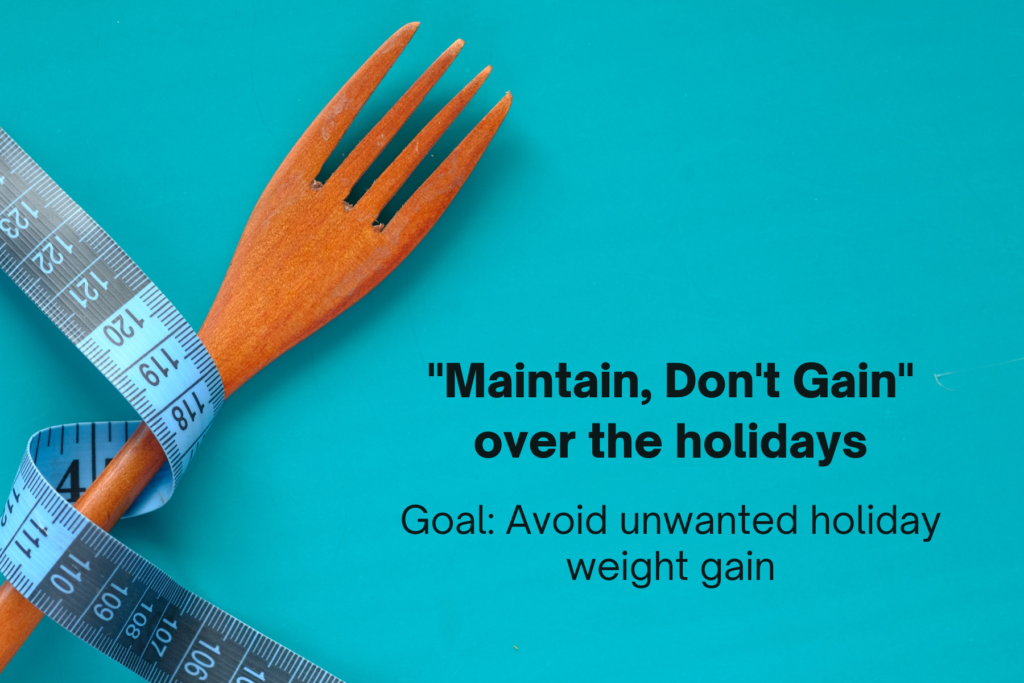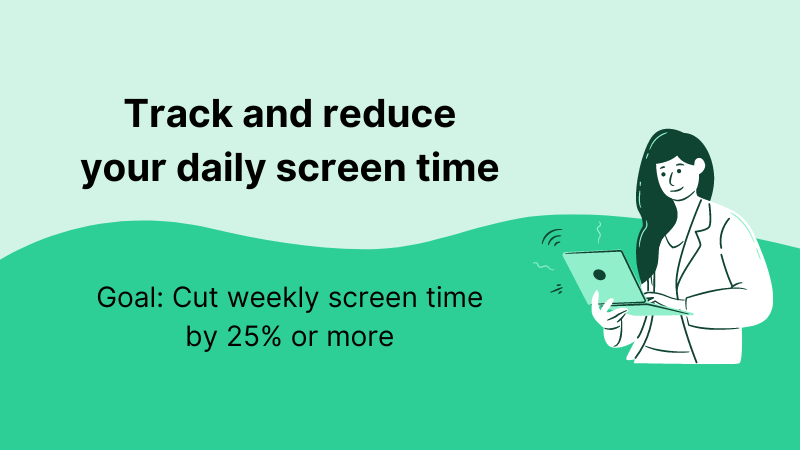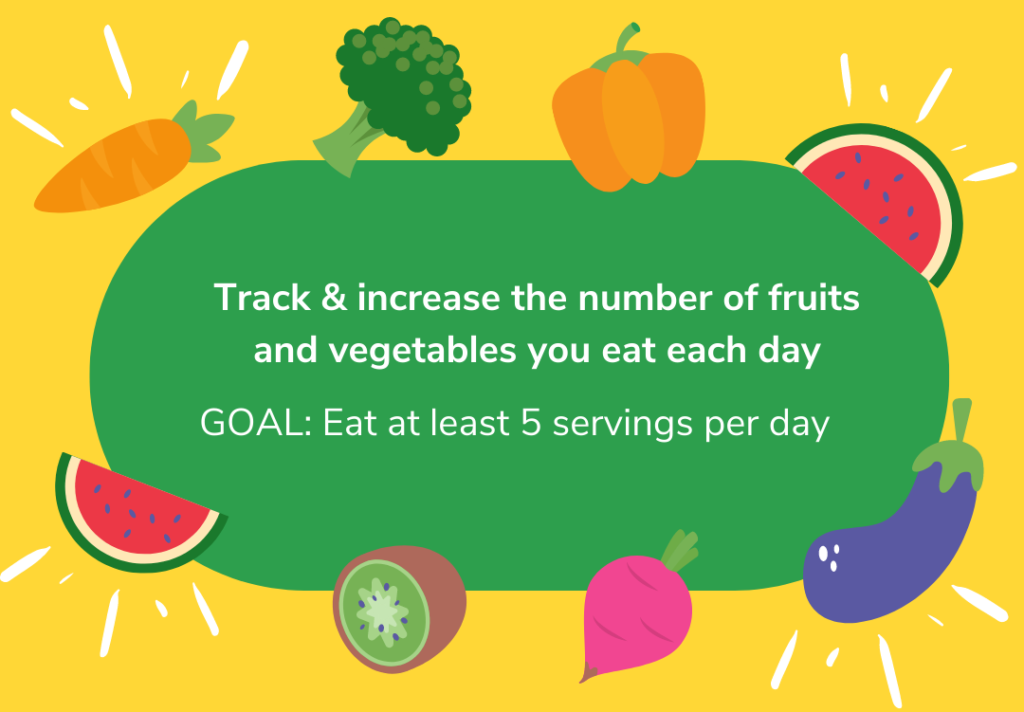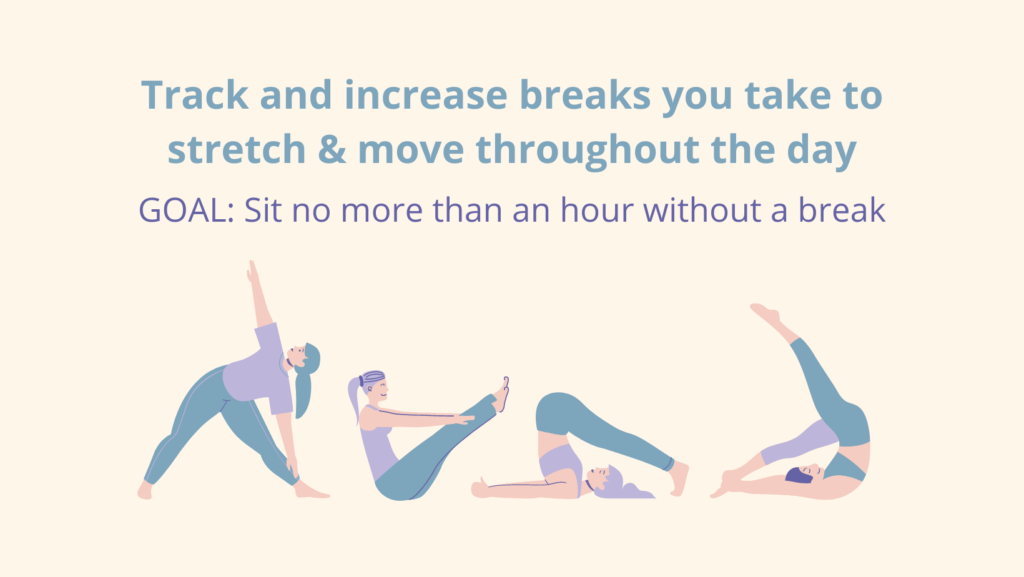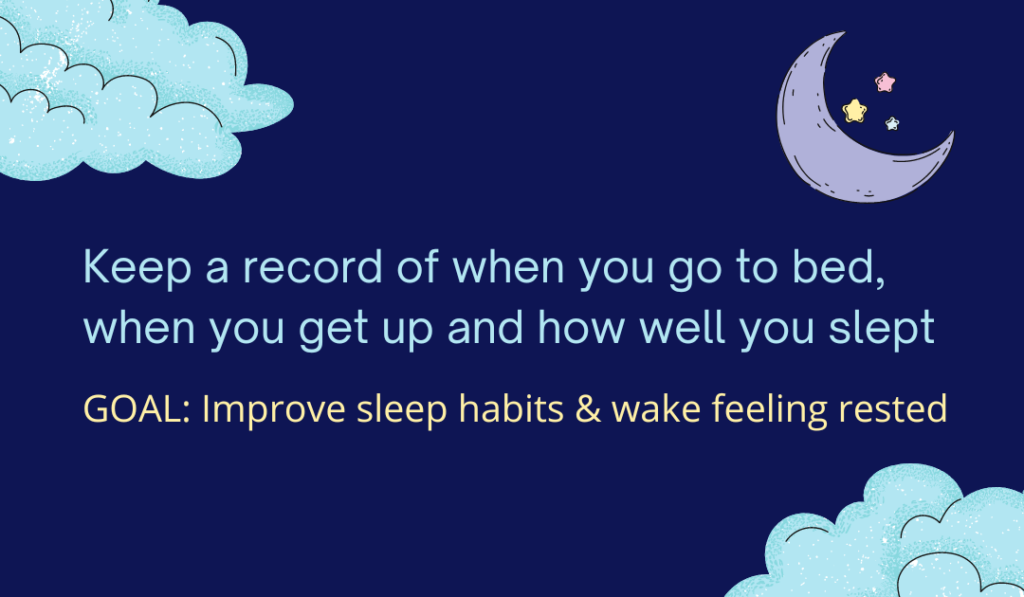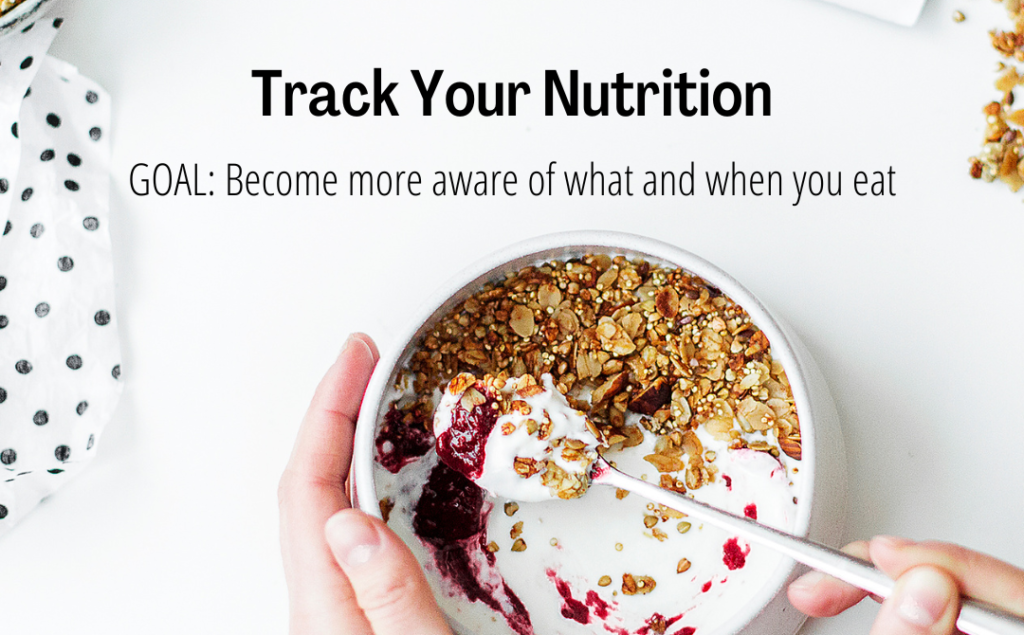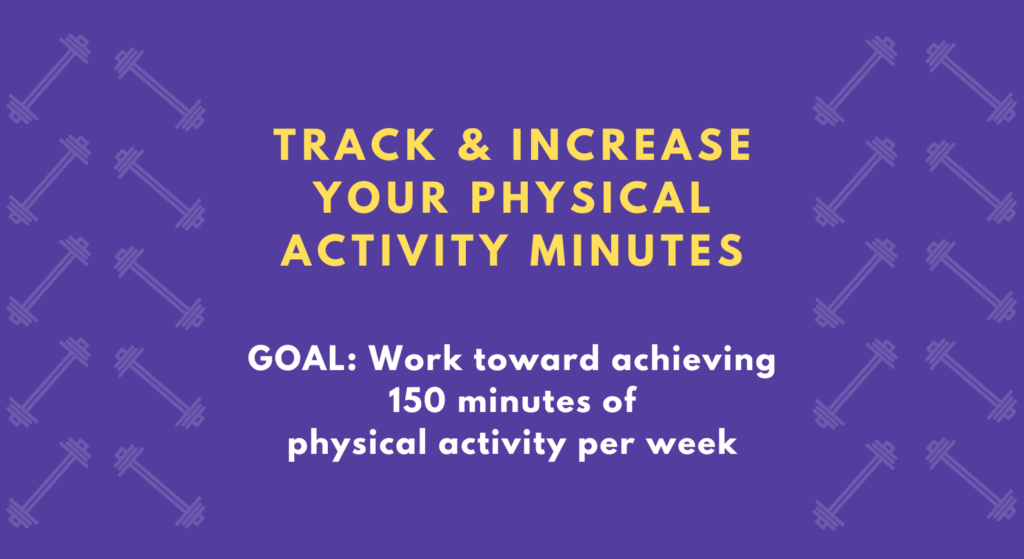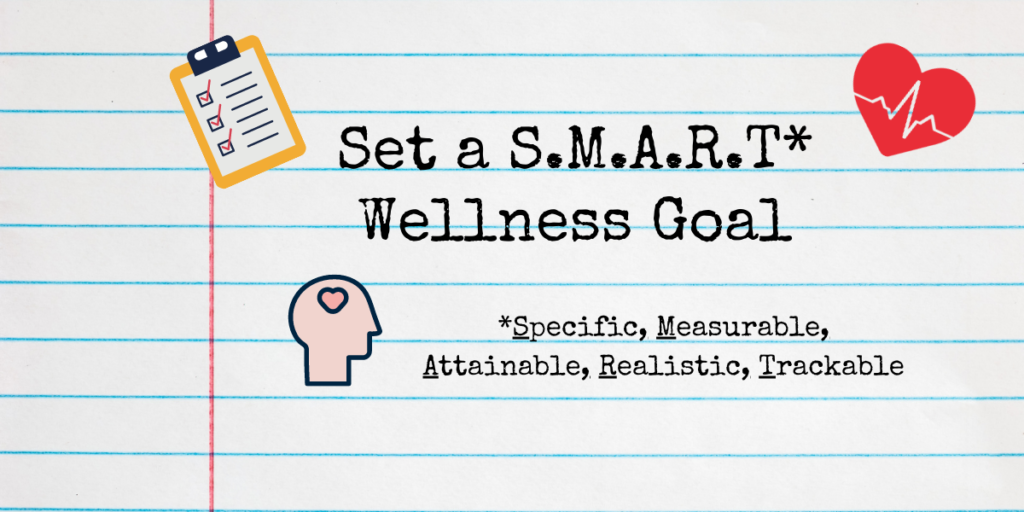In 2022, the Chronic Disease Action Team of the Healthy St. Mary’s Partnership launched a year-long wellness challenge. This challenge promoted healthy habits, provided education and resources, and encouraged community members to eat, live, and be healthy in 2022! Now, the Eat, Live, and Be Healthy Wellness Challenge Toolkit is here to provide you with all of the tools to host a successful wellness challenge within your business/organization. Whether you choose to host a full year’s worth of monthly challenges or pick and choose certain months – this toolkit was made for you!
With this toolkit, you’ll have everything you need to kickstart a wellness challenge in your workplace or organization! This toolkit includes:
- 12 Monthly Wellness Challenges
- Graphics to advertise the challenges
- Personalizable newsletters for each challenge
- Additional Resources
- Prize Ideas
2022 Wellness Challenge
December 2022 Challenge: Make Time for Self-Care
Self-care is the intentional act of caring for ourselves. It is making the time to do things that help you live well and improve both your physical health and mental health. When it comes to your mental health, self-care can help you manage stress, lower your risk of illness, and increase your energy. From a physical health perspective, self-care has been clinically proven to reduce heart disease, stroke, and cancer.
Self-care looks different for everyone, and it is important to find what you need and enjoy. It may take trial and error to discover what works best for you. Even small acts of self-care in your daily life can have a big impact.
4 Tips for Holiday Self-Care: Your newest seasonal tradition
How and Why to Practice Self-care
50 Self-Care Ideas for a Bad Day
November 2022 Challenge: “Maintain, Don’t Gain” over the holidays
The holiday season can be a difficult time of the year to stay physically active and maintain your weight. Getting through the holidays can be daunting, but it doesn’t have to be that way. Set the goal of maintaining your weight this holiday season instead of struggling to lose weight. Take the time to celebrate with family and friends during the holidays, and enjoy the festivities. Balance these celebrations with maintaining your weight by:
- Controlling portions
- Keeping moving
- Weighing in regularly
- Eating lean protein
- Starting the day with a healthy breakfast
- Using the rule “If you don’t love it, don’t eat it.”
- Satisfying a craving with a few bites
- Eating off of a plate instead of mindless munching
- Sitting down and savoring every bite
Maintain, Don’t Gain! Healthful Holiday Eating Tips
Maintain Don’t Gain Weekly Personal Tracker
5 Healthy Eating Tips for the Holidays
Staying Active and in Shape During the Holidays
October 2022 Challenge: Track and Increase Your Daily Step Count
Why set a daily step goal? Walking is a form of exercise that’s available to most people. You don’t need any special equipment other than some supportive walking shoes. You can walk anywhere (in your neighborhood, at the store, on the treadmill) and any time! Walking for regular activity can help reduce your risk of these common health problems:
- Heart disease
- Obesity
- Diabetes
- High blood pressure
- Depression
Setting a daily step goal is a great way to motivate yourself to move more and to interrupt the time you spend sitting.
10 Walking Ideas to Increase Your Step Count
8 Ways to Increase Your Daily Step Count
Your 14-Day Plan to Walk More Steps
September 2022 Challenge: Track Strength Training Included in your Week
Strength training is an important part of an overall fitness program. Muscle-strengthening activities like lifting weights can help you increase or maintain your muscle mass and strength. You can do strength training with free weights such as barbells and dumbbells, weight machines, or with no equipment at all. Slowly increasing the amount of weight and number of repetitions you do as part of muscle-strengthening activities will give you a multitude of health benefits, including:
- Better Cardiovascular Health
- Controlled Blood Sugar Levels
- Reduced Cancer Risk
- Lowered Injury Risks
- Strengthened Mental Health
- Improved Flexibility, Balance, and Mobility
- Elevated Body Image
- Boosted Brain Health
- Stronger Bones
September Challenge Newsletter
4-Week Progressive Bodyweight Workout Guide
Weight training: Do’s and don’ts of proper technique
A Beginner’s Guide to Weight Training
August 2022 Challenge: Track and reduce your daily screen time
Too much screen time can impact everything from your mood to your sleep to your physical health. The effects of too much time on your cell phone, computer, or in front of the tv extend to your whole body, and getting away from your screen can save more than just your eyes. While screens are used for work, provide entertainment, and keep us connected, limiting screen time or taking breaks from technology can have the following health benefits:
- Lower Stress
- Improve Sleep Habits
- Better Focus and Brain Function
- Boost Physical Activity
- Improve Posture
- Reduce Eye Strain
When you spend a lot of time in front of a screen, especially for work, it can be hard to find ways to spend that time without your computer, phone, or TV. Start by reducing the time you spend in front of screens at specific parts of the day. Make sure that when you use screens, you take frequent breaks to stretch and move. Making these small changes can make a big impact on your health.
How to Reduce Screen Time in the Digital Age
8 Tips to Reduce Screen Time for Adults
9 Practical Ways To Cut Down On Your Screen Time Every Day
July 2022 Challenge: Track & increase how much water you drink
Getting enough water every day is important for your health. Drinking water can prevent dehydration, a condition that can cause unclear thinking, result in mood change, cause your body to overheat, and lead to constipation and kidney stones. Water has no calories, so it can also help with managing body weight and reducing calorie intake when substituted for drinks with calories, such as sweet tea or regular soda.
Water helps your body:
- Keep a normal temperature.
- Lubricate and cushion joints.
- Protect your spinal cord and other sensitive tissues.
- Get rid of waste through urination, perspiration, and bowel movements.
June 2022 Challenge: Track & increase the number of fruits and vegetables you eat each day
A healthy eating routine is important at every stage of life and can have positive effects that add up over time. It’s important to eat a variety of fruits, vegetables, grains, protein foods, and dairy and fortified soy alternatives. When deciding what to eat or drink, choose options that are full of nutrients and make every bite count.
The USDA’s MyPlate nutrition guide, which is based on the 2020 – 2025 Dietary Guidelines for Americans, recommends that at each meal you make half your
plate fruits and vegetables.
Eating fruits and vegetables provide health benefits — people who eat more vegetables and fruits as part of an overall healthy diet are likely to have a reduced risk of some chronic diseases. Fruits and vegetables provide nutrients vital for health and maintenance of your body.
MyPlate Kitchen Recipes with Fruits
MyPlate Kitchen Recipes with Vegetables
So. Maryland, So Good: Buy Local Guide
Maryland Fruit and Vegetable Seasonality Charts
May 2022 Challenge: Track and increase breaks you take to stretch and move throughout the day
Being physically active is one of the most important actions that you can take to maintain or improve your health. And some of the health benefits gained from physical activity start immediately after being active, even when that activity is short.
The Physical Activity Guidelines for Americans, 2nd edition encourages everyone to “Move more and sit less” by reducing sedentary time and being physically active throughout the day.
A single episode of physical activity such as walking into work from the parking lot or up or down the stairs; may be of sufficient intensity (i.e., moderate to vigorous) that it can reduce anxiety and blood pressure and improve quality of sleep and insulin sensitivity. Even a brief episode of physical activity, if it is at least moderate intensity, counts!
Physical Activity Breaks for the Workplace – Resource Guide
30 Exercises to Do at Your Desk
April 2022 Challenge: Keep a record of when you go to bed, when you get up, and how well you slept
Not getting enough sleep is linked with many chronic diseases and conditions—such as type 2 diabetes, heart disease, obesity, and depression. Understanding how lack of sleep affects your health can allow you to make healthier decisions. Good sleep habits can help you get a good night’s sleep.
Some habits that can improve your sleep health:
- Be consistent. Go to bed at the same time each night and get up at the same time each morning, including on the weekends
- Make sure your bedroom is quiet, dark, relaxing, and at a comfortable temperature
- Remove electronic devices, such as TVs, computers, and smartphones, from the bedroom
- Avoid large meals, caffeine, and alcohol before bedtime
- Get some exercise. Being physically active during the day can help you fall asleep more easily at night.
March 2022 Challenge: Track your nutrition
Benefits of Tracking Your Food:
- Increases mindfulness of what you eat.
- Gives you a better understanding of your current eating habits.
- Informs you how nutrient dense your food is.
- Holds you accountable.
- Allows you to plan ahead.
American Heart Association Recipes
February 2022 Challenge: Track and increase your physical activity minutes
If you have not been physically active in a while, you may wonder how to get started again. Here are some tips:
- Look for opportunities to reduce sedentary time and increase active time. For example, instead of watching TV, take a walk after dinner.
- Set aside specific times to make physical activity part of your daily routine.
- Start with activities, locations, and times you enjoy. For example, you might like morning walks in your neighborhood; others might prefer an online class after work.
- Try activities with friends or family for motivation and mutual encouragement.
- Start slowly and work your way up to more physically challenging activities.
- Federal guidelines recommend 150 minutes of moderate-intensity physical activity a week for adults. You might split that into 30 minutes 5 days a week.
How to Ease Back into Exercise Safely After a Long Break
Activity Log: Find Your Starting Point
Weekly Exercise and Physical Activity Plan
Activity Log: Monthly Progress Test
January 2022 Challenge: Set a SMART Wellness Goal
SMART goals are:
- Specific
Eating healthier or exercising more sounds like a good idea. But what does it really mean? Aim for specific goals instead, such as eating five servings of fruits and vegetables a day or doing 150 minutes of moderate aerobic activity throughout the week. - Measurable
Make your goal one you can measure. Weight training 3 days a week is a goal you can track. A goal of exercising more is not so easily measured. - Attainable
Avoid aiming too high or too low. Find a goal that feels just right for you. - Realistic
Choosing realistic goals that you can meet will reinforce your efforts and keep you moving forward. - Trackable
Choosing specific, measurable goals means you can track your progress over time. Write your efforts down in a journal or track them on an app so you can see how far you’ve come.
2021 Recorded Webinars:
Mindful Eating
with Health Connections, MedStar St. Mary’s Hospital
Slides
Healthy Meal Prep Class
with Real Food Studio
Real Food Prep School Sign Up
Menu
Intuitive Eating
with University of Maryland Extension
Herbs & Spices
with University of Maryland Extension
Herbs, Spices, and Herbal Supplement Resource List
Herb & Spice Chart
Spice & Food Chart
Herbs: Preserving & Using
CookSmarts Guide to Flavoring with Fresh Herbs
CookSmarts Guide to Flavoring with Spices
Yoga
with Lauri Bruce
Healthy Eating Through the Holidays
with Health Connections
Surviving the Holiday Madness: Holistic Approaches to Wellness
with Terri Verbic-Boggs of Partners in Health


